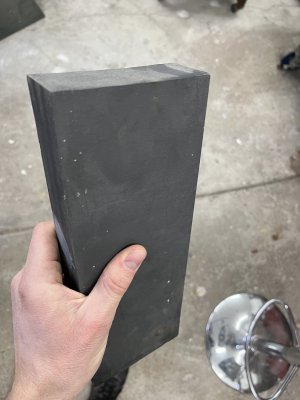- Joined
- Nov 8, 2011
- Messages
- 1,678
got a chunk of graphite 2 1/4 X 2 1/4 X 4 1/2 at an estate sale today for .50 cents. What's it good for?
Turns out the guy who's father-in-law died has a family owned machine shop and I'm meeting up with him there Monday to look at a Bridgeport head he took off of a tracer mill that he scraped and a few other pieces he has laying around.
Turns out the guy who's father-in-law died has a family owned machine shop and I'm meeting up with him there Monday to look at a Bridgeport head he took off of a tracer mill that he scraped and a few other pieces he has laying around.


